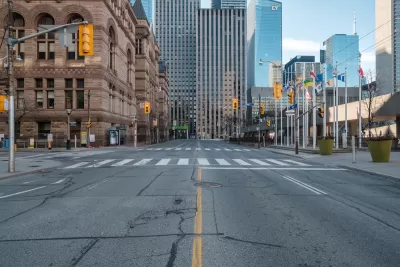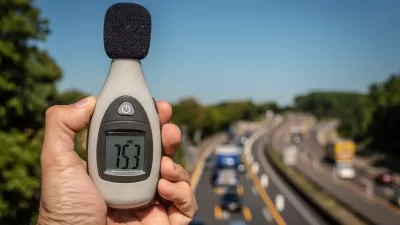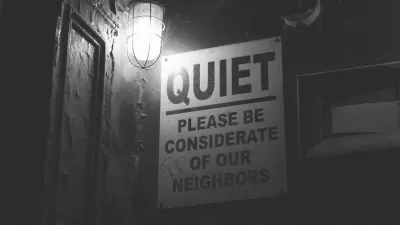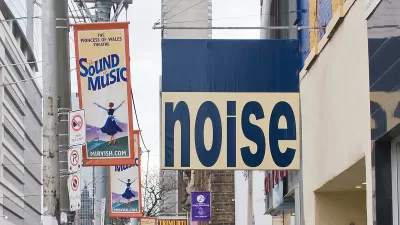During the pandemic, many neighborhoods became quieter than ever—but not everyone experienced the benefits equally.

During the Covid-19 pandemic, many urban residents experienced a never-before-heard stillness. But as urban noise returns in full force, Erica D. Walker, a researcher in community noise in urban environments, describes the dangers of excessive noise in an article in Streetsblog USA. “The health impacts associated with higher noise levels are brutal. They can limit the quantity and quality of our restorative sleep and disrupt our mood so profoundly that our body activates a flight-or-fight response,” Walker writes.
In the United States, harmful noise levels aren’t distributed equitably, Walker adds. “A very quick scan of our nation’s urban planning policies and practices will clearly show you that we as a country have a refined knack for dumping acoustical trash – like highways, airports, and truck depots – into the laps of those with very little power to fight back.” Many of these places continued to function in some capacity, providing essential services during the pandemic. A study by Walker’s organization, Community Noise Lab, also found that minority communities in Boston continued to experience high noise levels during the height of the pandemic in part due to a rise in fireworks activity. Cities including Paris, France have started testing automated enforcement of noise limits using decibel meters and cameras.
FULL STORY: Who Gets Peace and Quiet?: Urban Noise in the COVID-19 Pandemic

Alabama: Trump Terminates Settlements for Black Communities Harmed By Raw Sewage
Trump deemed the landmark civil rights agreement “illegal DEI and environmental justice policy.”

Planetizen Federal Action Tracker
A weekly monitor of how Trump’s orders and actions are impacting planners and planning in America.

The 120 Year Old Tiny Home Villages That Sheltered San Francisco’s Earthquake Refugees
More than a century ago, San Francisco mobilized to house thousands of residents displaced by the 1906 earthquake. Could their strategy offer a model for the present?

In Both Crashes and Crime, Public Transportation is Far Safer than Driving
Contrary to popular assumptions, public transportation has far lower crash and crime rates than automobile travel. For safer communities, improve and encourage transit travel.

Report: Zoning Reforms Should Complement Nashville’s Ambitious Transit Plan
Without reform, restrictive zoning codes will limit the impact of the city’s planned transit expansion and could exclude some of the residents who depend on transit the most.

Judge Orders Release of Frozen IRA, IIJA Funding
The decision is a victory for environmental groups who charged that freezing funds for critical infrastructure and disaster response programs caused “real and irreparable harm” to communities.
Urban Design for Planners 1: Software Tools
This six-course series explores essential urban design concepts using open source software and equips planners with the tools they need to participate fully in the urban design process.
Planning for Universal Design
Learn the tools for implementing Universal Design in planning regulations.
Clanton & Associates, Inc.
Jessamine County Fiscal Court
Institute for Housing and Urban Development Studies (IHS)
City of Grandview
Harvard GSD Executive Education
Toledo-Lucas County Plan Commissions
Salt Lake City
NYU Wagner Graduate School of Public Service





























